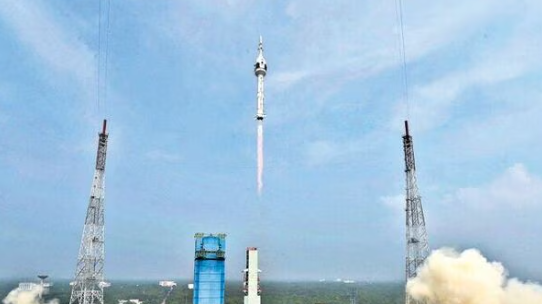ISRO Plans Second Uncrewed Gaganyaan Test (GS Paper 3, Defence)

Why in news?
- The Indian Space Research Organisation (ISRO) is set to achieve another milestone in its prestigious Gaganyaan mission, India’s first human spaceflight program.
Gaganyaan Mission Timeline
- The second uncrewed test flight is planned.
- Two more uncrewed missions will take place in 2025.
- If all goes well, the manned mission will be conducted by the end of 2025.
Recent Accomplishments
- In October 2023, ISRO successfully conducted an In-flight Abort Demonstration of the Crew Escape System (CES) at Mach number 1.2 with a newly developed Test Vehicle.
- The objectives included flight demonstration and evaluation of Test Vehicle subsystems, evaluation of CES, and demonstration of Crew Module characteristics and deceleration systems at higher altitude.
About Human Space Flight Centre (HSFC)
- HSFC, the lead center for human spaceflight activities, will spearhead the Gaganyaan program.
- It will coordinate efforts and focus activities carried out in other ISRO centers, research labs, Indian academia, and industries to accomplish the mission.
- HSFC will develop critical technologies such as life support systems, human factors engineering, crew training, and human rating and certification.
Gaganyaan Mission Objectives
- The project aims to demonstrate human spaceflight capability by launching a crew of three members to an orbit of 400 km for a 3-day mission.
- The crew will be brought back safely to Earth, landing in Indian sea waters.
Launch Vehicle
- ISRO will use its latest LVM3 rocket, a well-proven and reliable heavy-lift launcher, for the Gaganyaan mission.
- The LVM3 will be reconfigured to meet human rating requirements and will be capable of launching the Orbital Module to a Low Earth Orbit of 400 km.
Orbital Module
- The Orbital Module comprises the Crew Module (CM) and the Service Module (SM).
- The CM is the habitable space with an Earth-like environment for the crew, equipped with life support systems, avionics, and deceleration systems.
- The SM provides necessary support to the CM while in orbit, housing thermal, propulsion, power, and avionics systems.
Key points of Mission
- Gaganyaan is expected to cost around Rs. 10,000 crore (approximately $1.2 billion).
- The mission will make India the fourth country to send humans to space, after the United States, Russia, and China.
- The crew module will have a diameter of 3.7 meters and a height of 7 meters, with a mass of around 7 tonnes.
- ISRO has developed new technologies such as the Crew Escape System, which ensures the crew’s safety in case of an emergency during launch or ascent phase.
About ISRO (Indian Space Research Organisation)
- India’s national space agency, founded in 1969
- Notable missions: Chandrayaan (Moon), Mangalyaan (Mars), Aditya-L1 (Sun)
- Gaganyaan: India’s first human spaceflight mission
- Uncrewed test flights planned for 2024-2025
- Crewed mission aimed for late 2025
- Launching satellites for various applications (communication, navigation, remote sensing)
- Developed indigenous launch vehicles (PSLV, GSLV, SSLV)
- Vikram Sarabhai Space Centre (VSSC): Key facility for rocket development
Way Forward
- The successful second uncrewed test flight will be a crucial step in realizing India’s ambitious Gaganyaan mission.


